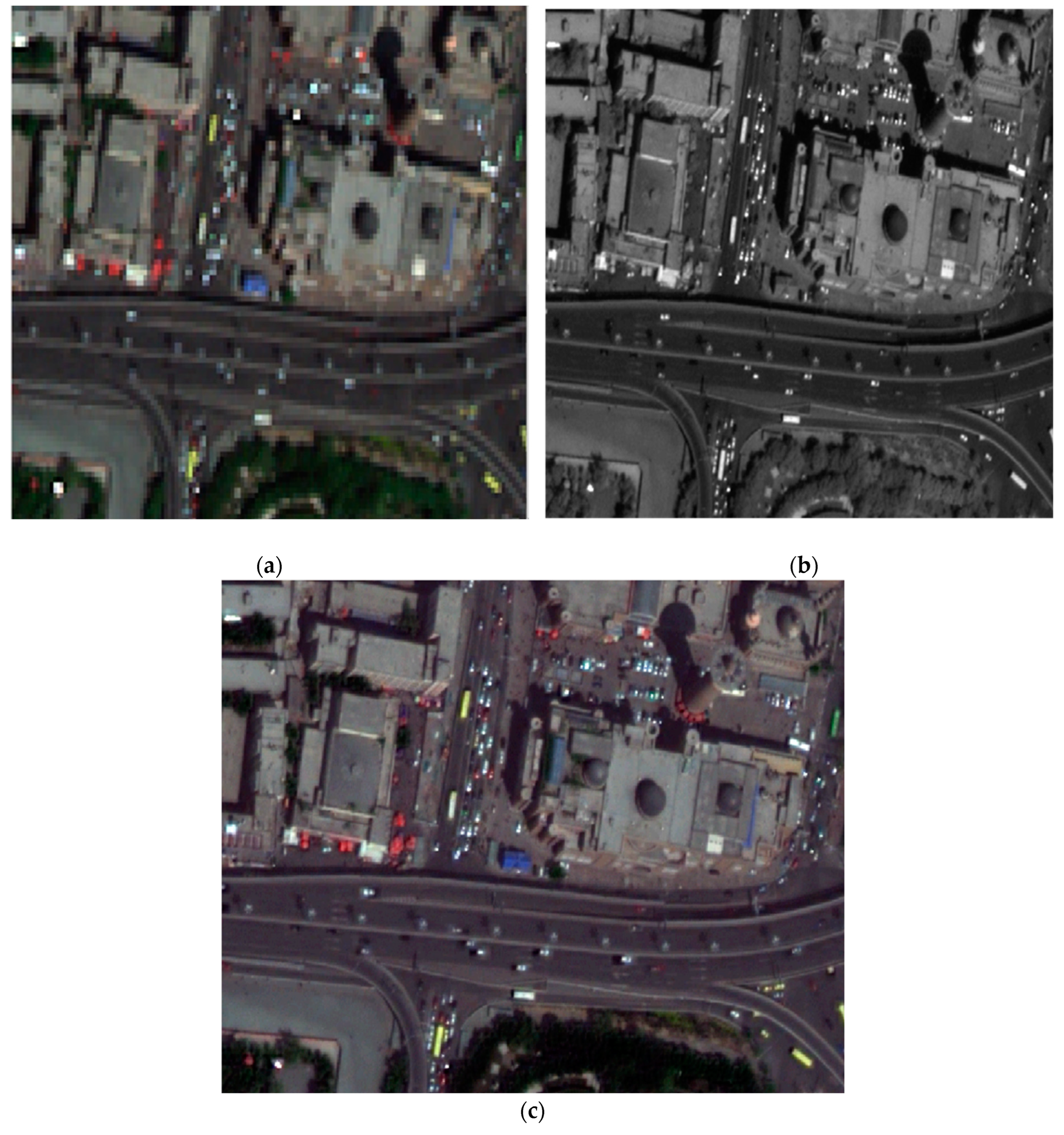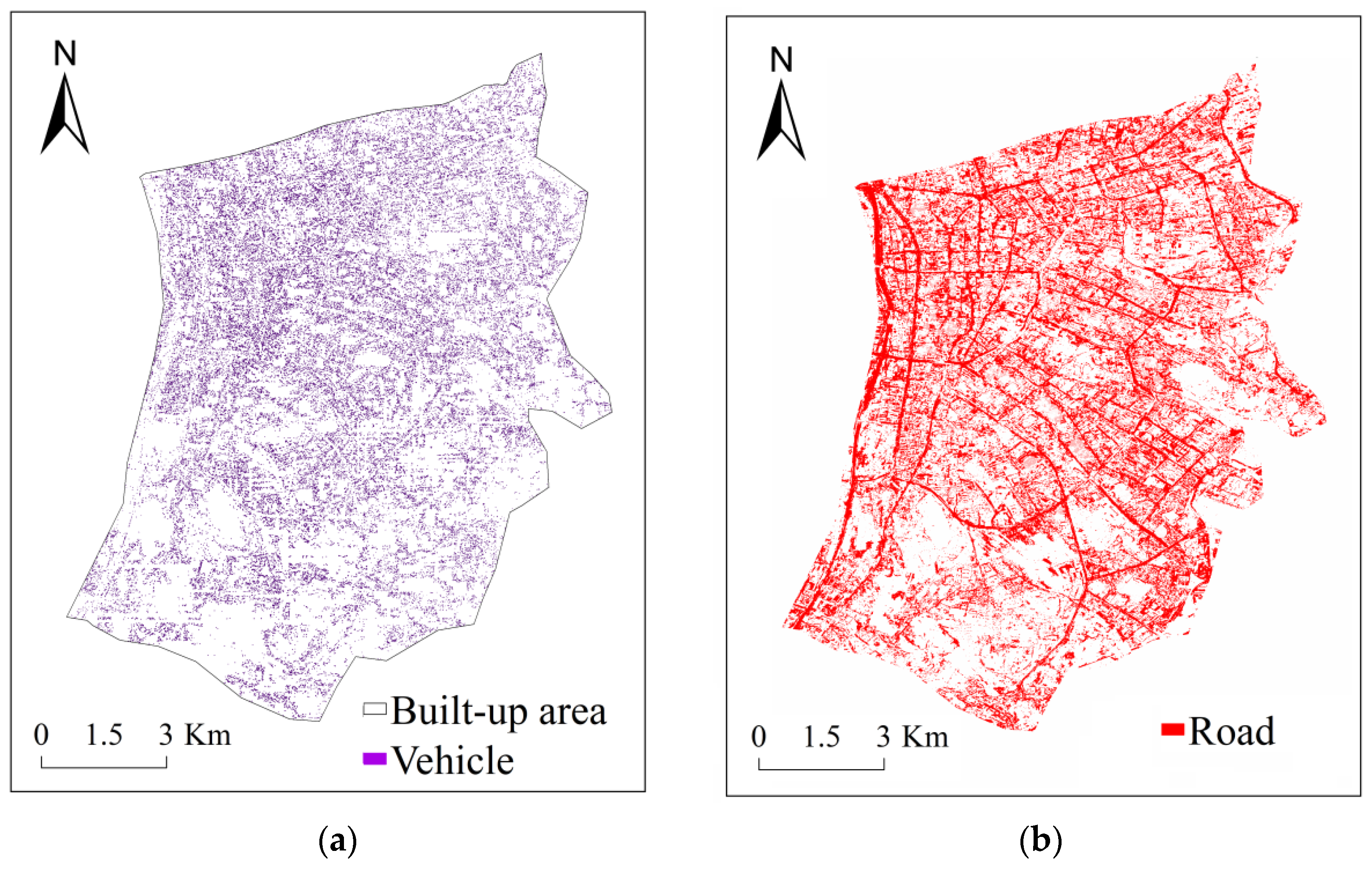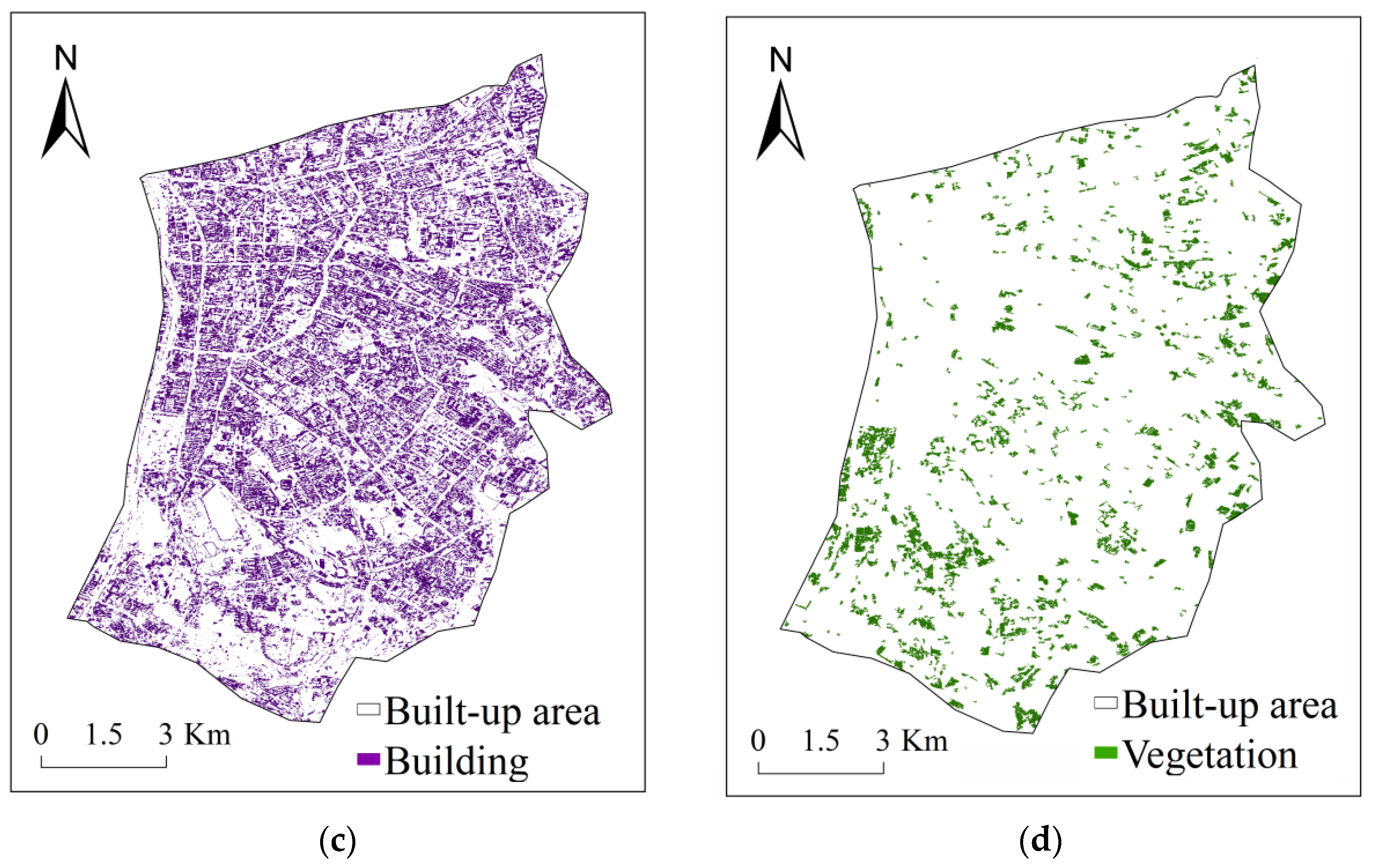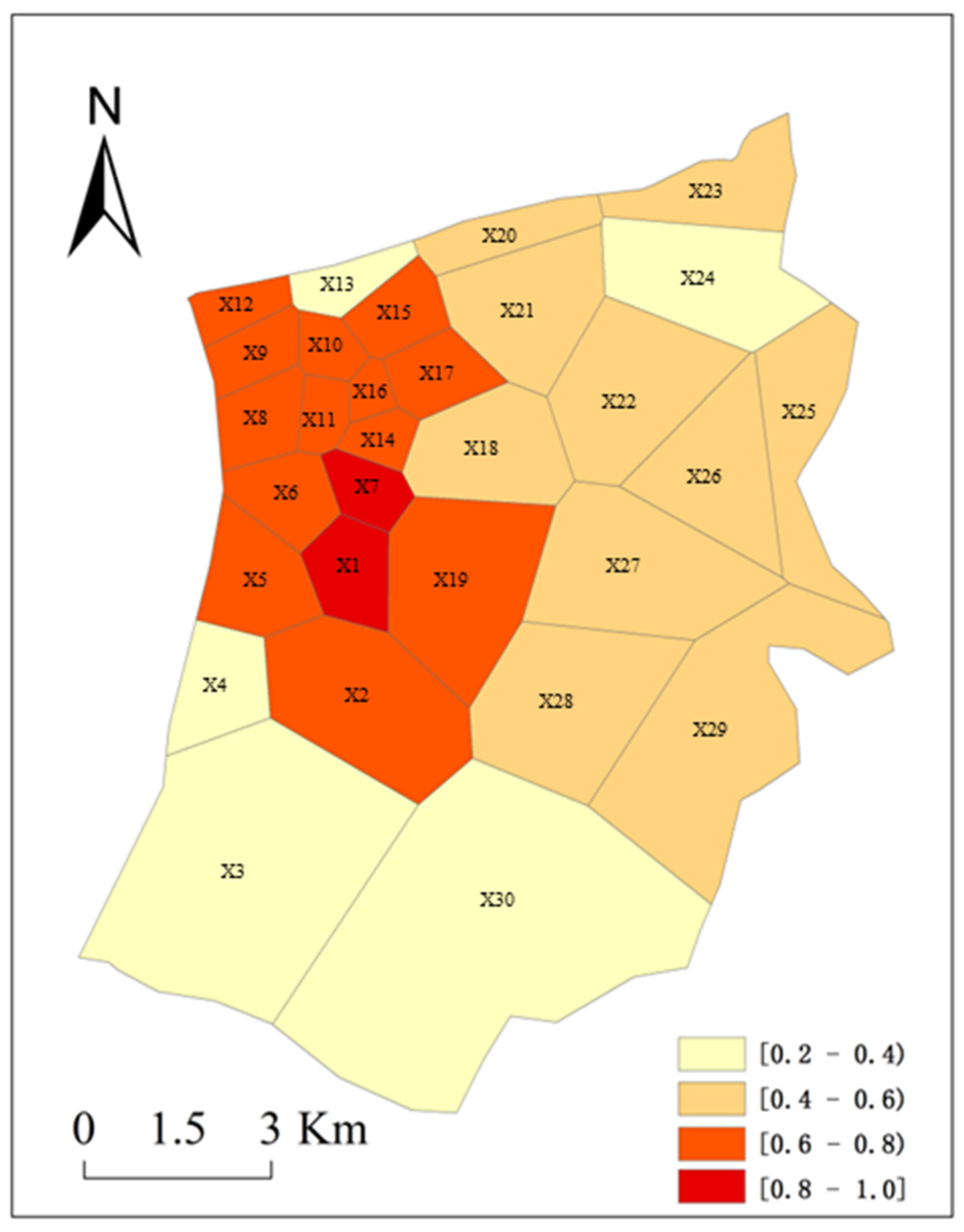Urban Vulnerability Analysis Based on Micro-Geographic Unit with Multi-Source Data—Case Study in Urumqi, Xinjiang, China
Abstract
1. Introduction
2. Materials and Method
2.1. Study Area
2.2. Micro-Geographic Unit
2.2.1. Conceptual Origin of Micro-Geographic Unit
2.2.2. Field Work to Identify Micro-Geographic Units Based on Local Knowledge
- X1: Erdaoqiao International Bazaar;
- X2: Xinjiang University;
- X3: Water Park–Nanjiao Passenger Station;
- X4: Urumqi South Park;
- X5: Sinopec Gas Station/Public Transport Stop;
- X6: Autonomous Region People’s Hospital;
- X7: Golden Coin Mountain International Plaza;
- X8: Danlu Fashion Department Store;
- X9: Chenggong Square;
- X10: People’s Cinema (roundabout five-way intersection);
- X11: Baihua Village Computer City;
- X12: Century Golden Flower Times Square;
- X13: Xinjiang Education College;
- X14: People’s Theater Night Market Leisure Square;
- X15: Urumqi First People’s Hospital;
- X16: Big Cross;
- X17: People’s Square;
- X18: Nanmen International City;
- X19: East Ring Integrated Market;
- X20: Orthopedic Hospital;
- X21: Corps Hospital;
- X22: Xingfu Road Meteorological Community;
- X23: Sun, Moon, and Stars Light Garden;
- X24: Urumqi Fourth Hospital;
- X25: Vocational University;
- X26: Happiness Flower Court;
- X27: Changle Garden;
- X28: West Region International Trade City;
- X29: Morning Light Garden;
- X30: South Campus of Xinjiang University.
2.2.3. Defining Micro-Geographic Unit
2.3. Development of Micro-Geographic Unit Based Urban Vulnerability Index
2.3.1. Urban Vulnerability Studies in the Literature
2.3.2. Data Items and Acquisition
2.4. Methods
2.4.1. Extracting Features Based on Object-Oriented Classification
2.4.2. Establish an Indicator Library
2.4.3. Construction of Vulnerability Model
Data Standardization
Determining Indicator Weights with Entropy Weighting Method (EWM)
- (1)
- Based on the normalized data, , the proportion of in of the ith sample under the th index, is calculated, thereby constructing a matrix ;The calculation formula is
- (2)
- Calculating the information entropy of the index value , the calculation formula is
- (3)
- The information entropy redundancy can be calculated using
- (4)
- The weight of the indicator can be determined using
Evaluation and Analysis Model
2.4.4. The Classification of Vulnerability Level
3. Results
3.1. The Results of Feature Extraction
3.2. Precision Verification
4. Discussions
4.1. Highly Vulnerable Micro-Geographic Units and Their Characteristics
4.2. Medium- and Low-Level Vulnerable Micro-Geographic Units and Their Characteristics
4.3. The Take-Home Message
5. Conclusions
Author Contributions
Funding
Data Availability Statement
Conflicts of Interest
References
- Fang, C.; Yu, D. China’s New Urbanization; Springer: Berlin/Heidelberg, Germany, 2016. [Google Scholar]
- Liu, Q.; Ullah, H.; Wan, W.G.; Peng, Z.Y.; Hou, L.; Qu, T.; Haidery, S.A. Analysis of Green Spaces by Utilizing Big Data to Support Smart Cities and Environment: A Case Study About the City Center of Shanghai. Isprs Int. J. Geo-Inf. 2020, 9, 360. [Google Scholar] [CrossRef]
- Yao, Y.; Yin, H.Y.; Xu, C.W.; Chen, D.S.; Shao, L.D.; Guan, Q.F.; Wang, R.Y. Assessing myocardial infarction severity from the urban environment perspective in Wuhan, China. J. Environ. Manag. 2022, 317, 115438. [Google Scholar] [CrossRef] [PubMed]
- Yang, X.D.; Wang, Q.J.; Zhou, Q.H. Regional habitat units in the context of urban-rural China: Concept, mechanism and features. Habitat Int. 2022, 128, 102668. [Google Scholar] [CrossRef]
- Yang, C.; Zhao, S. Scaling of Chinese urban CO2 emissions and multiple dimensions of city size. Sci. Total Environ. 2023, 857, 159502. [Google Scholar] [CrossRef] [PubMed]
- Li, W.; Yi, P.; Yu, H.; Lin, W.; Wu, X. Assessment on sustainable development of three major urban agglomerations in China based on sustainability-differentiation-combined weighting method. Sustain. Dev. 2023, 31, 2678–2693. [Google Scholar] [CrossRef]
- Li, H.Q.; Haynes, K.E. Economic Structure and Regional Disparity in China: Beyond the Kuznets Transition. Int. Reg. Sci. Rev. 2011, 34, 157–190. [Google Scholar] [CrossRef]
- Sun, Y.; Cui, Y.; Huang, H.X. An Empirical Analysis of the Coupling Coordination among Decomposed Effects of Urban Infrastructure Environment Benefit: Case Study of Four Chinese Autonomous Municipalities. Math. Probl. Eng. 2016, 2016, 8472703. [Google Scholar] [CrossRef]
- Wu, Y.Z.; Luo, J.J.; Zhang, X.L.; Skitmore, M. Urban growth dilemmas and solutions in China: Looking forward to 2030. Habitat Int. 2016, 56, 42–51. [Google Scholar] [CrossRef]
- Yu, D.L.; Fang, C.L.; Xue, D.; Yin, J.Y. Assessing Urban Public Safety via Indicator-Based Evaluating Method: A Systemic View of Shanghai. Soc. Indic. Res. 2014, 117, 89–104. [Google Scholar] [CrossRef]
- Fang, C.L.; Yu, D.L. Urban agglomeration: An evolving concept of an emerging phenomenon. Landsc. Urban Plan. 2017, 162, 126–136. [Google Scholar] [CrossRef]
- Cutter, S.L.; Mitchell, J.T.; Scott, M.S. Revealing the Vulnerability of People and Places: A Case Study of Georgetown County, South Carolina. Ann. Assoc. Am. Geogr. 2000, 90, 713–737. [Google Scholar] [CrossRef]
- Cutter, S.L.; Boruff, B.J.; Shirley, W.L. Social Vulnerability to Environmental Hazards. Soc. Sci. Q. 2003, 84, 242–261. [Google Scholar] [CrossRef]
- Borden, K.A.; Schmidtlein, M.C.; Emrich, C.T.; Piegorsch, W.W.; Cutter, S.L. Vulnerability of U.S. Cities to Environmental Hazards. J. Homel. Secur. Emerg. Manag. 2007, 4. [Google Scholar] [CrossRef]
- Piegorsch, W.W.; Cutter, S.L.; Hardisty, F. Benchmark Analysis for Quantifying Urban Vulnerability to Terrorist Incidents. Risk Anal. Int. J. 2007, 27, 1411–1425. [Google Scholar] [CrossRef] [PubMed]
- Schmidtlein, M.C.; Deutsch, R.C.; Piegorsch, W.W.; Cutter, S.L. A Sensitivity Analysis of the Social Vulnerability Index. Risk Anal. Int. J. 2008, 28, 1099–1114. [Google Scholar] [CrossRef] [PubMed]
- Yuen, B. Safety and dwelling in Singapore. Cities 2004, 21, 19–28. [Google Scholar] [CrossRef]
- Yu, D.L.; Fang, C.L. The dynamics of public safety in cities: A case study of Shanghai from 2010 to 2025. Habitat Int. 2017, 69, 104–113. [Google Scholar] [CrossRef]
- Wang, R.Y.; Liu, Y.; Lu, Y.; Zhang, J.B.; Liu, P.H.; Yao, Y.; Grekousis, G. Perceptions of built environment and health outcomes for older Chinese in Beijing: A big data approach with street view images and deep learning technique. Comput. Environ. Urban Syst. 2019, 78, 10. [Google Scholar] [CrossRef]
- Dumbaugh, E. Safe streets, livable streets. J. Am. Plan. Assoc. 2005, 71, 283–298. [Google Scholar] [CrossRef]
- Badland, H.M.; Schofield, G.M.; Witten, K.; Schluter, P.J.; Mavoa, S.; Kearns, R.A.; Hinckson, E.A.; Oliver, M.; Kaiwai, H.; Jensen, V.G.; et al. Understanding the Relationship between Activity and Neighbourhoods (URBAN) Study: Research design and methodology. BMC Public Health 2009, 9, 224. [Google Scholar] [CrossRef]
- Hipp, J. What is the ‘Neighbourhood’ in Neighbourhood Satisfaction? Comparing the Effects of Structural Characteristics Measured at the Micro-neighbourhood and Tract Levels. Urban Stud. 2010, 47, 2517–2536. [Google Scholar] [CrossRef]
- Crow, W.J.; Bull, J.L. Robbery Deterrence—An Applied Behavioral Science Demonstration—Final Report; Bureau of Justice Statistics: Washington, DC, USA, 1975.
- Pierce, G.L.; Spaar, S.; Briggs, L.B.R. The Character of Police Work: Strategic and Tactical Implications. Expert Rev. Proteom. 1988, 6, 1–4. [Google Scholar]
- Weisburd, D.L.; Maher, L.; Sherman, L.; Buerger, M.; Cohn, E.; Petrosino, A. Contrasting Crime General and Crime Specific Theory: The Case of Hot Spots of Crime; Bureau of Justice Statistics: Washington, DC, USA, 1993; pp. 45–70.
- Weisburd, D.L.; Green, L. Defining the street-level drug market. In Drugs and Crime: Evaluating Public Policy Initiatives; MacKenzie, D., Uchida, C., Eds.; Sage: Thousand Oaks, CA, USA, 1994; pp. 61–76. [Google Scholar]
- Sherman, L.W. Hot spots of crime and criminal careers of places. In Crime & Place Crime Prevention Studies; Police Executive Research Forum: Washington, DC, USA, 1995. [Google Scholar]
- Brantingham, P.L.; Brantingham, P.J. A theoretical model of crime hot spot generation. Stud. Crime Crime Prev. 1999, 8, 7–26. [Google Scholar]
- Weisburd, D. What Can Police Do to Reduce Crime, Disorder, and Fear? Ann. Am. Acad. Political Soc. Sci. 2004, 593, 42–65. [Google Scholar] [CrossRef]
- Kautt, P.M.; Roncek, D.W. Schools as Criminal “Hot Spots”. Crim. Justice Rev. 2007, 32, 339–357. [Google Scholar] [CrossRef]
- Weisburd, D.; Morris, N.A.; Groff, E.R. Hot Spots of Juvenile Crime: A Longitudinal Study of Arrest Incidents at Street Segments in Seattle, Washington. J. Quant. Criminol. 2009, 25, 443–467. [Google Scholar] [CrossRef]
- Weisburd, D.L.; Mazerolle, L.A. Crime and Disorder in Drug Hot Spots: Implications for Theory and Practice in Policing. Police Q. 2000, 3, 331–349. [Google Scholar] [CrossRef]
- Guerry, A.M. Essai Sur La Statistique Morale de la France; Crochard: Paris, France, 1833. [Google Scholar]
- Reiss, A.J.; Tonry, M.H. Communities and Crime; The University of Chicago: Chicago, IL, USA, 1986; Volume 8. [Google Scholar]
- Sampson, R.J.; Raudenbush, S.W.; Earls, F. Neighborhoods and violent crime: A multilevel study of collective efficacy. Science 1997, 277, 918–924. [Google Scholar] [CrossRef]
- Taylor, R.B. Social Order and Disorder of Street Blocks and Neighborhoods: Ecology, Microecology, and the Systemic Model of Social Disorganization. J. Res. Crime Delinq. 1997, 34, 113–155. [Google Scholar] [CrossRef]
- Eck, J.E.; Weisburd, D.L. Crime Places in Crime Theory. Soc. Sci. Electron. Publ. 2015, 4, 1–33. [Google Scholar]
- Sherman, L.W.; Gartin, P.R.; Buerger, M.E. Hot spots of predatory crime: Routine activities and the criminology of place. Criminology 1989, 27, 27–56. [Google Scholar] [CrossRef]
- Green, L. Policing Places with Drug Problems; Sage Publications: Thousand Oaks, CA, USA, 1996. [Google Scholar]
- Sherman, L.W.; Weisburd, D. General deterrent effects of police patrol in crime “hot spots”: A randomized, controlled trial. Justice Q. 1995, 12, 625–648. [Google Scholar] [CrossRef]
- Block, C.R.; Dabdoub, M.; Fregly, S. Crime Analysis through Computer Mapping; Police Executive Research Forum: Washington, DC, USA, 1995. [Google Scholar]
- Weisburd, D.; Green, L. Policing drug hot spots: The Jersey City drug market analysis experiment. Justice Q. 1995, 12, 711–735. [Google Scholar] [CrossRef]
- Mileti, D.; Noji, E. Disasters by Design: A Reassessment of Natural Hazards in the United States; Joseph Henry Press: Washington, DC, USA, 1999; p. 699. [Google Scholar]
- Jeffery, C.R. Crime Prevention Through Environmental Design. Am. Behav. Sci. 1971, 14, 598. [Google Scholar] [CrossRef]
- Liu, L.; Feng, J.X.; Ren, F.; Xiao, L.Z. Examining the relationship between neighborhood environment and residential locations of juvenile and adult migrant burglars in China. Cities 2018, 82, 10–18. [Google Scholar] [CrossRef]
- Duffala, D.C. Convenience Stores, Armed Robbery, and Physical Environmental Features. Am. Behav. 1976, 20, 227–245. [Google Scholar] [CrossRef]
- Mayhew, P.; Clarke, R.V.; Hough, M.; Sturman, A. Crime as Opportunity; Home Office: London, UK, 1976; Volume 34. [Google Scholar]
- Brantingham, P.; Brantingham, P. Criminality of place. Eur. J. Crim. Policy Res. 1995, 3, 5–26. [Google Scholar] [CrossRef]
- Hirschfield, A.; Brown, P.; Todd, P. GIS and the analysis of spatially-referenced crime data: Experiences in Merseyside, U.K. Int. J. Geogr. Inf. Sci. 1995, 9, 191–210. [Google Scholar] [CrossRef]
- Hirschfield, A.; Bowers, K.J. The Effect of Social Cohesion on Levels of Recorded Crime in Disadvantaged Areas. Urban Stud. 1997, 34, 1275–1295. [Google Scholar] [CrossRef]
- Loukaitousideris, A. Hot Spots of Bus Stop Crime. J. Am. Plan. Assoc. 1999, 65, 395–411. [Google Scholar] [CrossRef]
- Newton, A.; Bowers, K. The Geography of Bus Shelter Damage: The Influence of Crime, Neighbourhood Characteristics and Land-Use. Internet J. Criminol. 2007. Available online: http://eprints.hud.ac.uk/id/eprint/474/ (accessed on 9 July 2023).
- Yu, D.; Yin, J. Internet GIS and System Dynamic Modeling in Urban Public Safety and Security Studies: A Conceptual Framework. In Proceedings of the New Horizons in Web-Based Learning—ICWL 2010 Workshops—ICWL 2010 Workshops: STEG, CICW, WGLBWS, and IWKDEWL, Shanghai, China, 7–11 December 2010; pp. 207–216. [Google Scholar]
- Habitat, U.N. Enhancing Urban Safety and Security: Global Report on Human Settlements 2007; Routledge: London, UK, 2007; p. 380. [Google Scholar]
- Kumar, R.; Singh, S.; Bilga, P.S.; Jatin; Singh, J.; Singh, S.; Scutaru, M.-L.; Pruncu, C.I. Revealing the benefits of entropy weights method for multi-objective optimization in machining operations: A critical review. J. Mater. Res. Technol. 2021, 10, 1471–1492. [Google Scholar] [CrossRef]
- Zhu, Y.; Tian, D.; Yan, F. Effectiveness of Entropy Weight Method in Decision-Making. Math. Probl. Eng. 2020, 2020, 3564835. [Google Scholar] [CrossRef]
- Baier, K.; Matare, V.; Liebenberg, M.; Lakemeyer, G. Towards integrated intentional agent simulation and semantic geodata management in complex urban systems modeling. Comput. Environ. Urban Syst. 2015, 51, 47–58. [Google Scholar] [CrossRef]
- Bevacqua, A.; Yu, D.L.; Zhang, Y.J. Coastal vulnerability: Evolving concepts in understanding vulnerable people and places. Environ. Sci. Policy 2018, 82, 19–29. [Google Scholar] [CrossRef]
- De Sherbinin, A.; Schiller, A.; Pulsipher, A. The vulnerability of global cities to climate hazards. Environ. Urban. 2007, 19, 39–64. [Google Scholar] [CrossRef]
- Fang, C.L.; Wang, Y.; Fang, J.W. A comprehensive assessment of urban vulnerability and its spatial differentiation in China. J. Geogr. Sci. 2016, 26, 153–170. [Google Scholar] [CrossRef]
- Fu, B.; Yu, D.L.; Zhang, Y.J. The livable urban landscape: GIS and remote sensing extracted land use assessment for urban livability in Changchun Proper, China. Land Use Pol. 2019, 87, 11. [Google Scholar] [CrossRef]
- Kher, J.; Aggarwal, S.; Punhani, G. Vulnerability of Poor Urban Women to Climate-linked Water Insecurities at the Household Level: A Case Study of Slums in Delhi. Indian J. Gend. Stud. 2015, 22, 15–40. [Google Scholar] [CrossRef]
- Kok, M.; Ludeke, M.; Lucas, P.; Sterzel, T.; Walther, C.; Janssen, P.; Sietz, D.; de Soysa, I. A new method for analysing socio-ecological patterns of vulnerability. Reg. Environ. Chang. 2016, 16, 229–243. [Google Scholar] [CrossRef]
- Shah, P.B.; Patel, C.R. Integration of Remote Sensing and Big Data to Study Spatial Distribution of Urban Heat Island for Cities with Different Terrain. Int. J. Eng. 2023, 36, 71–77. [Google Scholar] [CrossRef]
- De Nadai, M.; Xu, Y.Y.; Letouz, E.; Gonzalez, M.C.; Lepri, B. Socio-economic, built environment, and mobility conditions associated with crime: A study of multiple cities. Sci. Rep. 2020, 10, 12. [Google Scholar] [CrossRef] [PubMed]
- Lardier, D.T., Jr.; Reid, R.J.; Yu, D.; Garcia-Reid, P. A Spatial Analysis of Alcohol Outlet Density and Abandoned Properties on Violent Crime in Paterson New Jersey. J. Community Health 2019, 45, 534–541. [Google Scholar] [CrossRef] [PubMed]
- Glaeser, E. Cities, Productivity, and Quality of Life. Science 2011, 333, 592–594. [Google Scholar] [CrossRef]
- Wang, Y.; Hasselberg, M.; Wu, Z.Z.; Laflamme, L. Distribution and characteristics of road traffic crashes in the Chaoyang District of Beijing, China. Accid. Anal. Prev. 2008, 40, 334–340. [Google Scholar] [CrossRef] [PubMed]










| Micro-Geographic Unit Vulnerability Index with Attribute | The Specific Meanings of Indicators |
|---|---|
| Vegetation patch density (negative) | Fragmentation degree of patch |
| Vegetation extension index (positive) | Aggregation degree of patch |
| Vegetation Shannon index (positive) | The size and uniformity of patch area |
| Average road vehicle density (negative) | Vehicles per unit length of road |
| Vehicle density (negative) | Vehicles on roads per unit area |
| Road density (positive) | Road length per unit area |
| Road complexity (negative) | Reflected by the average road node degree, it refers to the count of intersections per unit area |
| Building density (negative) | Building coverage |
| Vulnerability | Low Vulnerability | Somewhat-Low Vulnerability | Medium Vulnerability |
| Vulnerability Index | 0—0.2 | 0.2–0.4 | 0.4–0.6 |
| States | Very good | Good | General |
| Vulnerability | Somewhat-High Vulnerability | High Vulnerability | |
| Vulnerability Index | 0.6–0.8 | 0.8–1 | |
| States | Alert | Crisis |
| Category | Vehicle | Road | Building | Vegetation | Row Sum | User Accuracy |
|---|---|---|---|---|---|---|
| Vehicle | 85 | 3 | 12 | 0 | 100 | 85% |
| Road | 0 | 91 | 5 | 4 | 100 | 91% |
| Building | 0 | 4 | 96 | 0 | 100 | 96% |
| Vegetation | 1 | 3 | 0 | 94 | 100 | 94% |
| Column sum | 86 | 101 | 113 | 98 | 400 | 98% |
| Producer accuracy (%) | 99% | 90% | 85% | 96% | ||
| Overall accuracy (%) | 92.8% | |||||
| Micro-Geographic Unit Traffic Safety Vulnerability Index | Indicator Attribute | Weights |
|---|---|---|
| Vegetation patch density | + | 0.1240 |
| Vegetation extension index | − | 0.1247 |
| Vegetation Shannon index | − | 0.1252 |
| Average road vehicle density | + | 0.1253 |
| Vehicle density | + | 0.1253 |
| Road density | − | 0.1245 |
| Road complexity | + | 0.1266 |
| Building density | + | 0.1244 |
| Micro- Geographic Unit | Vegetation Patch Density | Vegetation Extension Index | Vegetation Shannon Index | Average Road Vehicle Density | Vehicle Density | Road Density | Road Complexity | Building Density | Vulnerability |
|---|---|---|---|---|---|---|---|---|---|
| X1 | 0.1243 | 0.1209 | 0.0209 | 0.1374 | 0.0840 | 0.1190 | 0.0874 | 0.1244 | 0.8183 |
| X2 | 0.0506 | 0.0984 | 0.0244 | 0.1211 | 0.0696 | 0.1189 | 0.0522 | 0.1031 | 0.6383 |
| X3 | 0.0126 | 0.0080 | 0.0766 | 0.0238 | 0.0544 | 0.1025 | 0.0353 | 0.0280 | 0.3412 |
| X4 | 0.0157 | 0.0004 | 0.1254 | 0.1029 | 0.0649 | 0.0533 | 0.0216 | 0.0055 | 0.3897 |
| X5 | 0.0962 | 0.1082 | 0.0836 | 0.1546 | 0.0946 | 0.0618 | 0.0189 | 0.1205 | 0.7386 |
| X6 | 0.1267 | 0.1098 | 0.0070 | 0.0913 | 0.0816 | 0.0834 | 0.0239 | 0.1279 | 0.6515 |
| X7 | 0.1220 | 0.1244 | 0.0139 | 0.1777 | 0.1098 | 0.0748 | 0.0880 | 0.0947 | 0.8053 |
| X8 | 0.1132 | 0.1052 | 0.0139 | 0.1069 | 0.1089 | 0.1058 | 0.0651 | 0.1028 | 0.7219 |
| X9 | 0.0952 | 0.0962 | 0.0348 | 0.0917 | 0.1253 | 0.0835 | 0.0750 | 0.0952 | 0.6969 |
| X10 | 0.0954 | 0.1184 | 0.0309 | 0.0574 | 0.0678 | 0.0402 | 0.1224 | 0.1066 | 0.6391 |
| X11 | 0.1002 | 0.1226 | 0.0958 | 0.0998 | 0.0691 | 0.0394 | 0.0630 | 0.1178 | 0.7077 |
| X12 | 0.0851 | 0.0455 | 0.0697 | 0.1030 | 0.1033 | 0.1165 | 0.0492 | 0.0660 | 0.6383 |
| X13 | 0.0867 | 0.0519 | 0.0453 | 0.0173 | 0.0169 | 0.0939 | 0.0049 | 0.0555 | 0.3723 |
| X14 | 0.1179 | 0.1146 | 0.0000 | 0.1143 | 0.0973 | 0.0724 | 0.1266 | 0.1244 | 0.7673 |
| X15 | 0.0721 | 0.0515 | 0.0906 | 0.1331 | 0.1298 | 0.1071 | 0.0628 | 0.0807 | 0.7277 |
| X16 | 0.1250 | 0.1062 | 0.0139 | 0.1253 | 0.0656 | 0.0152 | 0.0859 | 0.1011 | 0.6383 |
| X17 | 0.0671 | 0.0451 | 0.0766 | 0.0959 | 0.0987 | 0.0584 | 0.0649 | 0.0958 | 0.6025 |
| X18 | 0.0843 | 0.0911 | 0.0801 | 0.0383 | 0.0162 | 0.0729 | 0.0662 | 0.1090 | 0.5580 |
| X19 | 0.1150 | 0.1005 | 0.0557 | 0.0614 | 0.0862 | 0.0971 | 0.0082 | 0.0884 | 0.6127 |
| X20 | 0.0870 | 0.1004 | 0.0105 | 0.0497 | 0.0260 | 0.1192 | 0.0032 | 0.0809 | 0.4767 |
| X21 | 0.1096 | 0.0999 | 0.0418 | 0.0287 | 0.0256 | 0.0847 | 0.0114 | 0.0631 | 0.4648 |
| X22 | 0.0536 | 0.0515 | 0.1184 | 0.0080 | 0.0034 | 0.1179 | 0.0068 | 0.0738 | 0.4333 |
| X23 | 0.0697 | 0.1018 | 0.0244 | 0.0243 | 0.0199 | 0.0988 | 0.0040 | 0.0630 | 0.4059 |
| X24 | 0.0600 | 0.0679 | 0.0836 | 0.0063 | 0.0152 | 0.0931 | 0.0126 | 0.0453 | 0.3840 |
| X25 | 0.0790 | 0.1019 | 0.0418 | 0.0021 | 0.0173 | 0.1076 | 0.0042 | 0.0706 | 0.4245 |
| X26 | 0.0811 | 0.0761 | 0.0557 | 0.0067 | 0.0073 | 0.1157 | 0.0056 | 0.0728 | 0.4209 |
| X27 | 0.0682 | 0.0665 | 0.0906 | 0.0067 | 0.0114 | 0.1168 | 0.0016 | 0.1060 | 0.4677 |
| X28 | 0.0776 | 0.0600 | 0.0523 | 0.0571 | 0.0383 | 0.0871 | 0.0036 | 0.0481 | 0.4240 |
| X29 | 0.0641 | 0.0901 | 0.0697 | 0.0240 | 0.0104 | 0.1127 | 0.0068 | 0.0576 | 0.4355 |
| X30 | 0.0180 | 0.0011 | 0.0871 | 0.0000 | 0.0000 | 0.1245 | 0.0017 | 0.0003 | 0.2328 |
Disclaimer/Publisher’s Note: The statements, opinions and data contained in all publications are solely those of the individual author(s) and contributor(s) and not of MDPI and/or the editor(s). MDPI and/or the editor(s) disclaim responsibility for any injury to people or property resulting from any ideas, methods, instructions or products referred to in the content. |
© 2023 by the authors. Licensee MDPI, Basel, Switzerland. This article is an open access article distributed under the terms and conditions of the Creative Commons Attribution (CC BY) license (https://creativecommons.org/licenses/by/4.0/).
Share and Cite
Zheng, J.; Yu, D.; Han, C.; Wang, Z. Urban Vulnerability Analysis Based on Micro-Geographic Unit with Multi-Source Data—Case Study in Urumqi, Xinjiang, China. Remote Sens. 2023, 15, 3944. https://doi.org/10.3390/rs15163944
Zheng J, Yu D, Han C, Wang Z. Urban Vulnerability Analysis Based on Micro-Geographic Unit with Multi-Source Data—Case Study in Urumqi, Xinjiang, China. Remote Sensing. 2023; 15(16):3944. https://doi.org/10.3390/rs15163944
Chicago/Turabian StyleZheng, Jianghua, Danlin Yu, Chuqiao Han, and Zhe Wang. 2023. "Urban Vulnerability Analysis Based on Micro-Geographic Unit with Multi-Source Data—Case Study in Urumqi, Xinjiang, China" Remote Sensing 15, no. 16: 3944. https://doi.org/10.3390/rs15163944
APA StyleZheng, J., Yu, D., Han, C., & Wang, Z. (2023). Urban Vulnerability Analysis Based on Micro-Geographic Unit with Multi-Source Data—Case Study in Urumqi, Xinjiang, China. Remote Sensing, 15(16), 3944. https://doi.org/10.3390/rs15163944







